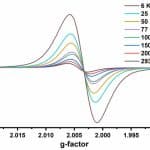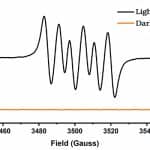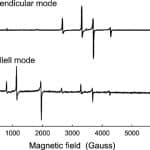The CIQTEK EPR300 Electron Paramagnetic Resonance (EPR) Spectrometer incorporates the latest microwave technology and an ultra-high-performance signal processing unit, significantly enhancing detection sensitivity and signal-to-noise ratio to an unprecedented level. It enables precise detection and analysis of unpaired electron signals even at extremely low spin concentrations, providing a novel approach for exploring microscopic physical and chemical properties of low-concentration substances such as free radicals and metal ions.
Additionally, the EPR300 supports easy upgrades from X Band to Q Band, achieving higher g-value resolution, which is advantageous for detecting anisotropic samples.
The EPR300 establishes a solid experimental foundation for cutting-edge research in life sciences, materials science, chemistry, and physics, driving scientific discoveries to new milestones.
 Precise temperature control from low to high temperatures
Precise temperature control from low to high temperatures In-situ irradiation systems with automatic optical filter switch
In-situ irradiation systems with automatic optical filter switch
 Various EPR resonators to meet different experimental requirements
Various EPR resonators to meet different experimental requirements
High-Q Resonator: As a general-purpose resonator, the high-Q design offers high sensitivity and is suitable for EPR analysis on most samples. It is compatible with both liquid nitrogen and liquid helium ultra-low temperature variable temperature systems.
Dual-Mode Resonator: Tailored for analyzing complex systems—such as transition metal and rare-earth ions that display forbidden transitions—this resonator offers dual measurement modes, both perpendicular and parallel, for enhanced experimental flexibility.
Flat Cell: Support solvent systems with dielectric loss, significantly improving detection sensitivity.
Electrolytic Cell: Designed for in-situ electrolysis experiments, easily realizing online monitoring of electrochemical processes.
Flow Cell and Mixing Cell: Equipped with a peristaltic pump. For the in-situ continuous-flow EPR analysis. Easily accomplish in-situ mixing and reaction monitoring of multi-component samples.
Tissue Cell: Designed for biological tissue samples, providing convenient EPR analysis in the biological and medical fields.
Time-resolved/transient electron paramagnetic resonance (TR-EPR) integrates time-resolved techniques with paramagnetic resonance spectroscopy, achieving temporal resolutions down to the nanosecond scale. The system primarily comprises a main controller for digital control, a high-energy pulsed laser for stable photoexcitation, a laser energy meter to monitor laser pulse power, and a dielectric resonator for EPR signal detection. TR-EPR is utilized to investigate transient species such as radicals or excited triplet states in rapid reaction processes, detecting and studying these short-lived species with lifetimes in the microsecond to nanosecond range. This capability is crucial for understanding radical reaction kinetics and addresses the detection limitations of traditional equipment regarding short-lived species.
